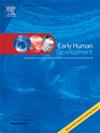Oral motor interventions used to support the development of oral feeding skills in preterm infants: An integrative review
IF 2.2
3区 医学
Q2 OBSTETRICS & GYNECOLOGY
引用次数: 0
Abstract
Background
One criterion for infant NICU discharge is the ability to meet all nutritional needs by mouth, therefore, it is important to understand interventions that can improve the trajectory to full oral feeding. While many oral motor and feeding interventions are used in clinical practice, it remains unclear which are supported by the literature.
Aim
The aim of this integrative review was to identify and understand what oral motor interventions are defined in the literature to support positive outcomes for preterm infants and their parents.
Methods
An integrative review of studies published from 2002 to 2022 focusing on applied oral motor interventions and their impact on feeding-related outcomes was completed. The systematic search used databases including PubMed, Cochrane, CINAHL, Scopus, and Google Scholar. Studies were included if they used a study population of preterm infants born </= 32 weeks estimated gestational age (EGA) and imposed an oral motor intervention/exposure that commenced prior to 36 weeks postmenstrual age (PMA) while the infant was in the NICU, with outcomes of time to full oral feeding, length of stay (LOS), feeding performance measures, feeding efficiency, weight gain, infant physiology, and/or parental outcomes. Studies were excluded if they were observational, pilot, or feasibility designs; if they enrolled a purposefully healthy sample of infants; had non-relevant outcomes including apnea and incidence of retinopathy of prematurity; had a sample size <30 without a priori calculation of power or had a calculated sample size that was not attained.
Results
Forty articles met inclusion criteria with four different interventions (or a combination of them) identified: nonnutritive sucking, oral motor stimulation [Fucile's protocol, Premature Infant Oral Motor Intervention (PIOMI)], NTrainer, and swallowing exercises.
Discussion
All interventions were associated with positive outcomes and began between 29- and 30-weeks PMA. Detailed information on adverse events (both physiologic and behavioral) in future research could allow for better risk-benefit analysis. The methodology and quality of the studies differed too much to allow for quantitative analysis; however, there does not appear to be compelling evidence that more stimulatory interventions are superior to less stimulatory interventions – a key consideration when working with preterm infants.
用于支持早产儿口腔喂养技能发展的口腔运动干预:综合综述。
背景:新生儿重症监护室(NICU)婴儿出院标准之一是能够通过口腔满足所有营养需求,因此,了解能够改善完全口腔喂养轨迹的干预措施非常重要。虽然临床实践中使用了许多口腔运动和喂养干预措施,但仍不清楚哪些干预措施得到了文献的支持。目的:本综合综述旨在确定和了解文献中定义的口腔运动干预措施,以支持早产儿及其父母取得积极成果:方法: 对 2002 年至 2022 年期间发表的研究进行综合回顾,重点关注应用口腔运动干预措施及其对喂养相关结果的影响。系统性检索使用的数据库包括 PubMed、Cochrane、CINAHL、Scopus 和 Google Scholar。如果研究对象为早产儿,则纳入研究结果:40篇文章符合纳入标准,确定了四种不同的干预措施(或其组合):非营养性吸吮、口腔运动刺激[Fucile方案,早产儿口腔运动干预(PIOMI)]、NTrainer和吞咽练习:讨论:所有干预措施都取得了积极的效果,并在早产儿出生后 29 到 30 周之间开始实施。未来研究中有关不良事件(包括生理和行为)的详细信息可以更好地进行风险效益分析。这些研究的方法和质量差异太大,无法进行定量分析;但是,似乎没有令人信服的证据表明刺激性较强的干预措施优于刺激性较弱的干预措施--这是早产儿工作中的一个关键考虑因素。
本文章由计算机程序翻译,如有差异,请以英文原文为准。
求助全文
约1分钟内获得全文
求助全文
来源期刊

Early human development
医学-妇产科学
CiteScore
4.40
自引率
4.00%
发文量
100
审稿时长
46 days
期刊介绍:
Established as an authoritative, highly cited voice on early human development, Early Human Development provides a unique opportunity for researchers and clinicians to bridge the communication gap between disciplines. Creating a forum for the productive exchange of ideas concerning early human growth and development, the journal publishes original research and clinical papers with particular emphasis on the continuum between fetal life and the perinatal period; aspects of postnatal growth influenced by early events; and the safeguarding of the quality of human survival.
The first comprehensive and interdisciplinary journal in this area of growing importance, Early Human Development offers pertinent contributions to the following subject areas:
Fetology; perinatology; pediatrics; growth and development; obstetrics; reproduction and fertility; epidemiology; behavioural sciences; nutrition and metabolism; teratology; neurology; brain biology; developmental psychology and screening.
 求助内容:
求助内容: 应助结果提醒方式:
应助结果提醒方式:


